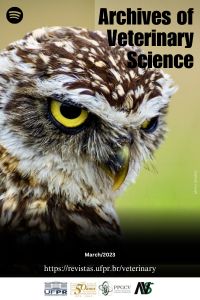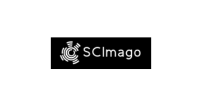The effect of eye stimulation using graded external weights on the oculocardiac reflex in beagle dogs
DOI:
https://doi.org/10.5380/avs.v1i1.85932Keywords:
autonomic nervous system, heart rate variability, ocular compression, vagus nerve, von FreyAbstract
The objective of this study was to determine to what extent the oculocardiac reflex (OCR) progressively rises with increasing external pressures over the superior eyelid. Controlled external weights were applied to the left eyelid of ten conscious healthy adult beagle dogs, using an electronic von Frey aesthesiometer with a modified probe. Four different weights (200 g, 300 g, 400 g and 800 g) were applied on four different non-consecutive days (with one-week intervals). Pressure was applied by pushing the device against the superior eyelid. The baseline heart rate was primarily recorded using an electrocardiograph (ECG). Then, indices of heart rate variability such as R-R intervals and vasovagal tonus index (VVTI) were calculated from the ECG tracings using twenty consecutive QRS complexes from each dog, before and after a selected set of graded weights were applied to the eye. Median R-R interval significantly increased when an external weight of 200 g was applied and peaked at 300 g. VVTI values peaked at 400 g. With higher pressures, the proportional increase was smaller in both R-R intervals and VVTI. We concluded that external eye pressure using a weight of 200 g or more is sufficient to elicit an OCR response in conscious dogs. Pressures above 400 g started to activate compensatory mechanisms that counteracted with the OCR, probably linked to an adrenergic response induced by the animal’s discomfort. Changes in R-R intervals might be used as an early OCR marker, while VVTI apparently was less influenced by potential sympathetic responses.
Downloads
Published
How to Cite
Issue
Section
License
Authors that wish to publish in AVS agree with the following conditions:
- To keep copyright of the article and allow the AVS to publish the first time. The article will be licensed by Creative Commons - Atribuição 4.0 Internacional allowing the sharing of their work.
- Authors may distribute their work by other channel of distribution (ex.: local or public repository).
- Authors have the permission to publish their work online, using different channels (similar to above), even before the final editorial process.














